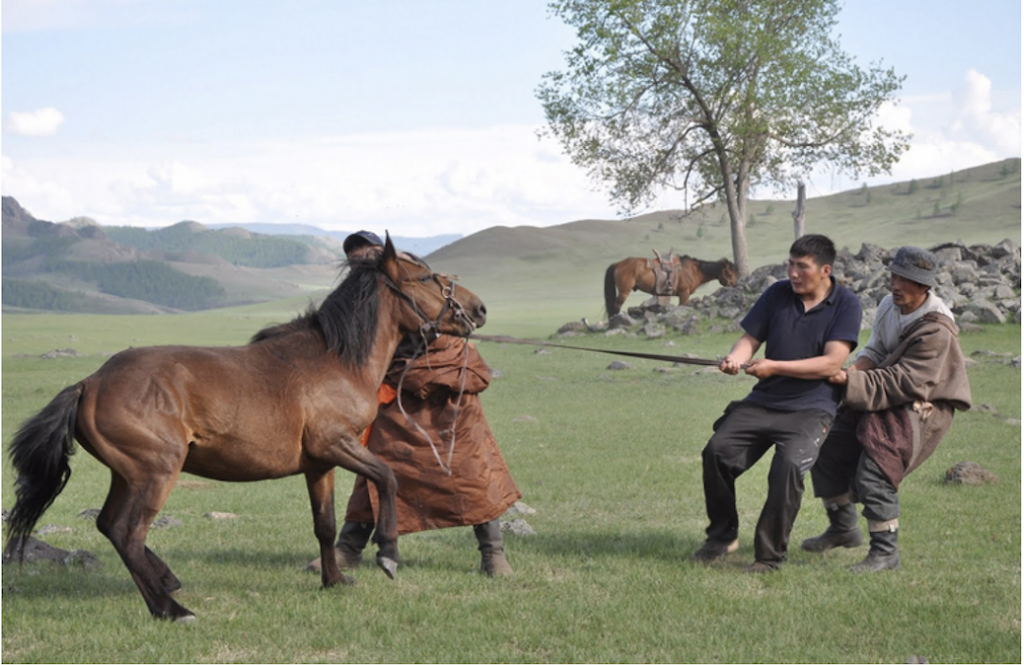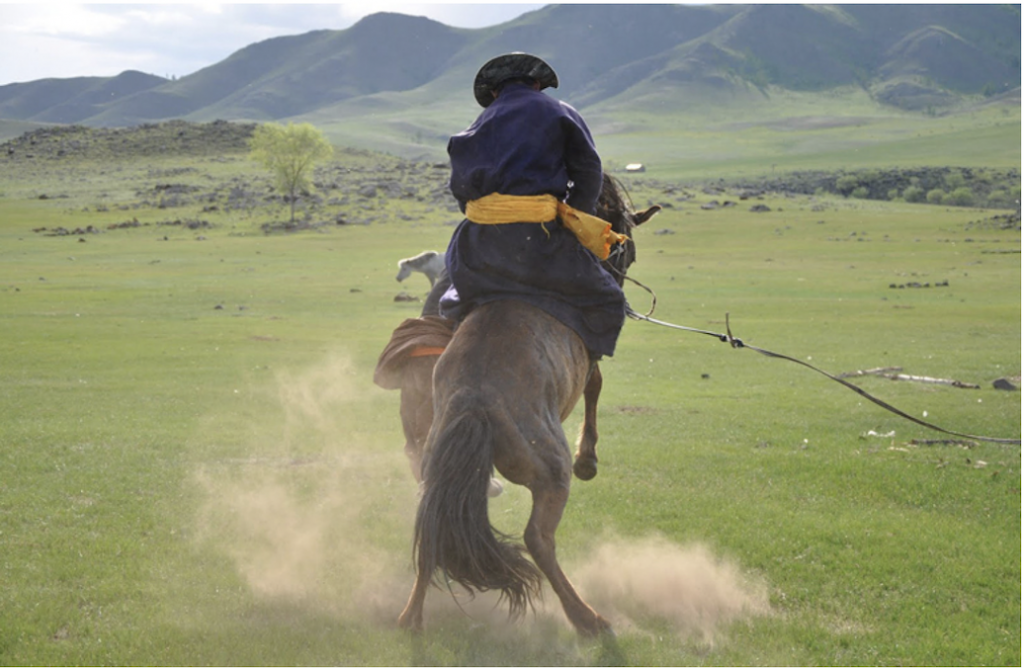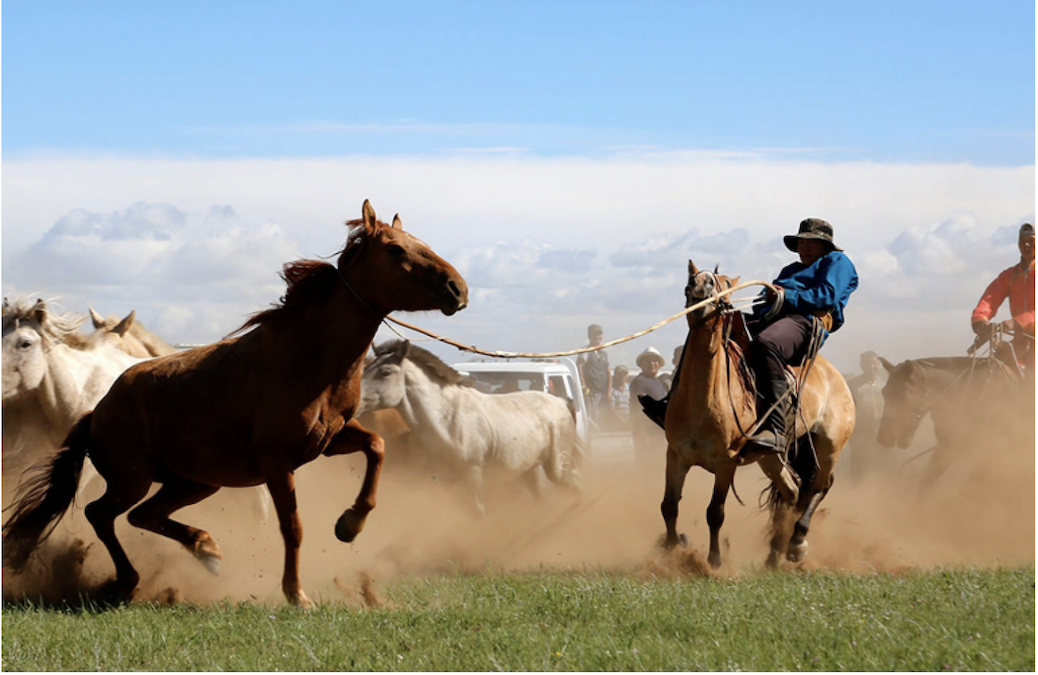An untamed horse disposes all of its strength to resist a rider, but the entire ordeal looks remarkably impressive. Some horses let out a squeal in a statement of fury. This is because a rider aggressively attempted to climb on top of it, something the horse has never encountered before, something the horse would not accept. Maybe the horse’s idea is to offer his own aggressiveness back: “If you think you can ride me, then I can make you fall.”
“Once you successfully climb on an untamed horse, do not twitch, or even bat an eye. Do not give your ride the slightest lack of confidence. The more you let slip, the more encouraged it will become to resist you again.” This is the first rule of taming horses for Mongol men. Horses are much more intelligent but sensitive among other herd animals. Even if you are a separate being, you must become on with the horse once you succeed in taming it.
Humans began domesticating horses about 10,000 years ago and Mongols’ history with horses begin approximately at the same time. Mongols and horses have become inseparable “old friends” throughout their long history, even more so than any of the other “five pillars” of nomadic herd animals, which include sheep, cow and goat. While a man and his horse are separate, they must become one once the man rides on his mount.

Foals are not naturally born with an ability to serve as excellent rides, nor are they expected to have one. They are taught and trained.
Horse taming formed over thousands of years to become a part of culture and daily lives of nomads. On one hand, there is always the fight to live as a free animal as nature intended, while on the other it’s a fight for asserting influence and understanding of ownership onto the other over time.
Horse taming is a coveted skill among nomads. It is difficult to call a person a herdsman if this skill was never learned or inherited – and it can be said it is a matter of pride for herdsmen to be able to competently train and tame horses. It is not uncommon to see herdsmen riding or otherwise taming horses. What’s interesting is men of all ages seem to have been “born” with this ability to tame horses.
It is quite impressive to see a man ride a horse with such mastery that they look as if they are one and the same being. Understandably, horseracing is also a popular pastime activity for nomads. Horseracing is present in nearly every culture, but Mongol horseracing might differ in how the race finishes. The horse would finally accept the rider as his master when the race is over.

When the horse’s intention makes this clear, its riders do not take this title lightly – they accept a much deeper responsibility and dedicate considerable respect to their companion for the rest of their lives. There are also times when horses were actually worshipped as divine animals.
Due to its sacred status to Mongol people, a horse symbol is eternalized in the nation’s coat of arms. A shape of a horse’s head is also traditionally fitted at the end of a horse fiddle, Mongolia’s national musical instrument.
It was not long ago that horses were the fastest transportation available not only to Mongol nomads, but in the world. This may be the reason horses were respected and coveted as much as they did.
Yes, Mongol people are tamers of horses – and they are not Mongols without horses. Even today, nomadic Mongols are masters of horses and taming them is their life.
Bum-Erdene T.

